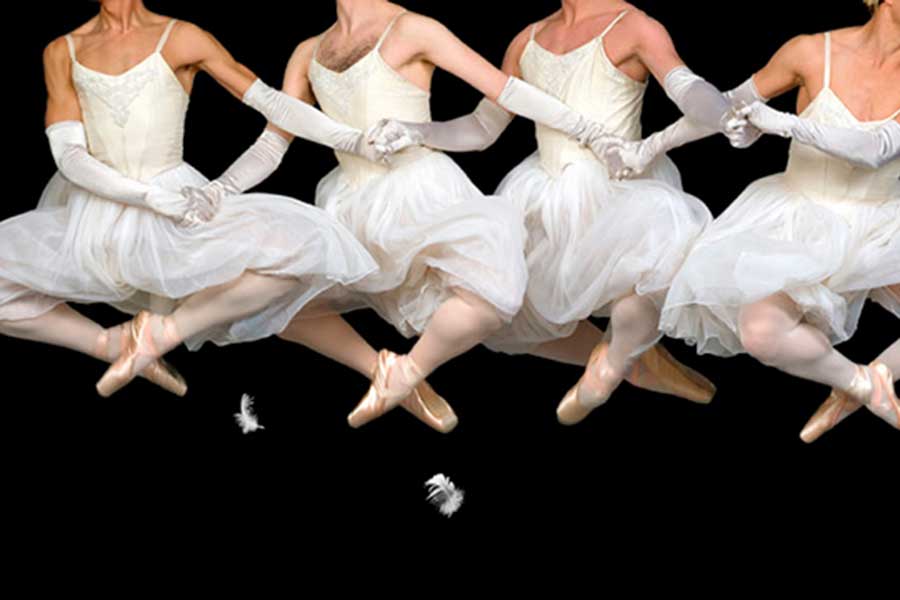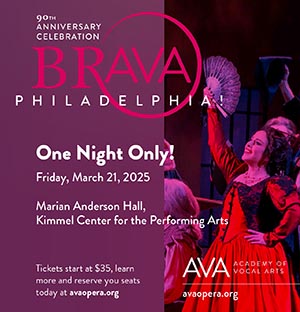“Rebels on Pointe,” screening 7 p.m. Dec. 29 at the International House of Philadelphia’s Lightbox Film Center, is director Bobbi Jo Hart’s crowd-pleasing documentary on Les Ballets Trockadero de Monte Carlo, the all-male drag-comedy ballet company. Hart takes viewers on stage, behind the scenes and around the world with the gay men in the Trocks (as the dancers are called). She focuses on a handful of company members with inspiring stories, such as Robert Carter, who was particularly proud (and teary-eyed) that he could earn enough money dancing to bring his parents to see him perform in New York.
Hart and dancer Robert Carter spoke with PGN about Hart’s latest film.
PGN: Bobbi Jo, where did you first see the Trocks perform? How did you learn about them?
BJH: The truth is that before I did the film, I had never seen them perform. I saw an ad for their performance and this picture of these fabulous men in ballet drag. I wondered, Who are they and why have I not heard about them? I called New York and asked if I could hang out backstage to do some research filming. Luckily, Tory [Dobrin, the company’s artist director] said, “Sure.” That footage was the opening scene of the film. I saw them perform for the first time from the wings. It was pretty amazing.
PGN: Robert, how or why did you get involved in the film?
RC: I was approached by Tory to see if I wanted to be a part of it. I jumped at the chance. There have been so many guys who have come and gone through the company, and their personal stories will never be told or known. This was my chance to be immortalized.
PGN: Bobbi Jo, what prompted you to tell the Trocks’ story?
BJH: No one had done a film about them. They are so unique and they had been around for 40 years. I knew there was some great archival footage and there was a great backstory. I am an observational filmmaker. It’s a risk in a lot of ways, because you shoot a lot of footage waiting for the drama to unfold. I got to know the dancers and realized that they have incredible and inspiring personal stories — a lot of it related to the sacrifices they made to be part of the company. So where did they come from to pursue such a unique and wonderful life, growing up gay and wanting to dance in pointe shoes and being part of this company? I weaved the company’s story with their personal stories. Bobby was fascinating to me. He has been with the company for so long. He’s from Charleston and is African-American, and an incredible dancer. When he said he’s a prima ballerina, I fell in love with him.
PGN: The film works to remove the stigma about male ballet dancers, men in drag and men adhering to masculine/feminine codes of behavior. Can you talk about that, Robert?
RC: I have said about myself in the past that my artistry does not have a gender. Through [the Trocks], I get to express the drag side of my personality in my work, but I prefer to look at myself as just an artist. We break down the barriers and blur the lines a bit because our dancing is so well-done. We trick the eye because we look like girls. It makes people question what they understand about other people and themselves. The company is known for drag, but it’s only one element of what we do, and not the main purpose. The main purpose is to show that art, however expressed — through music, dance or writing — is the one thing that binds the human spirit. This is why I think we’re so successful internationally.
PGN: The comedy is key to the Trocks’ ballet, and what makes it universally beloved. You have to be great dancers to parody “Swan Lake.” What observations do you have about the comedy element to the Trocks?
RC: You have to know a lot about what you’re doing to send it up. To our core, we adore the work and glorify it. We’re ambassadors for dance. Our shows inspire [audiences] more often than not to see others dance. It broadens their perspective. We bring it to you in a way that you never had to see the ballet to enjoy it. We break the ice in a good way with our ridiculous opening announcement. We break down that barrier for people who are apprehensive to see it.
BJH: It’s a send-up of traditional ballet. The dancers are all classically trained. It’s an intense dedication. Not only are they performing these ballets, they are infusing them with parody. But it’s respectful, and it make the moves the dancers do often more difficult than the traditional moves.

